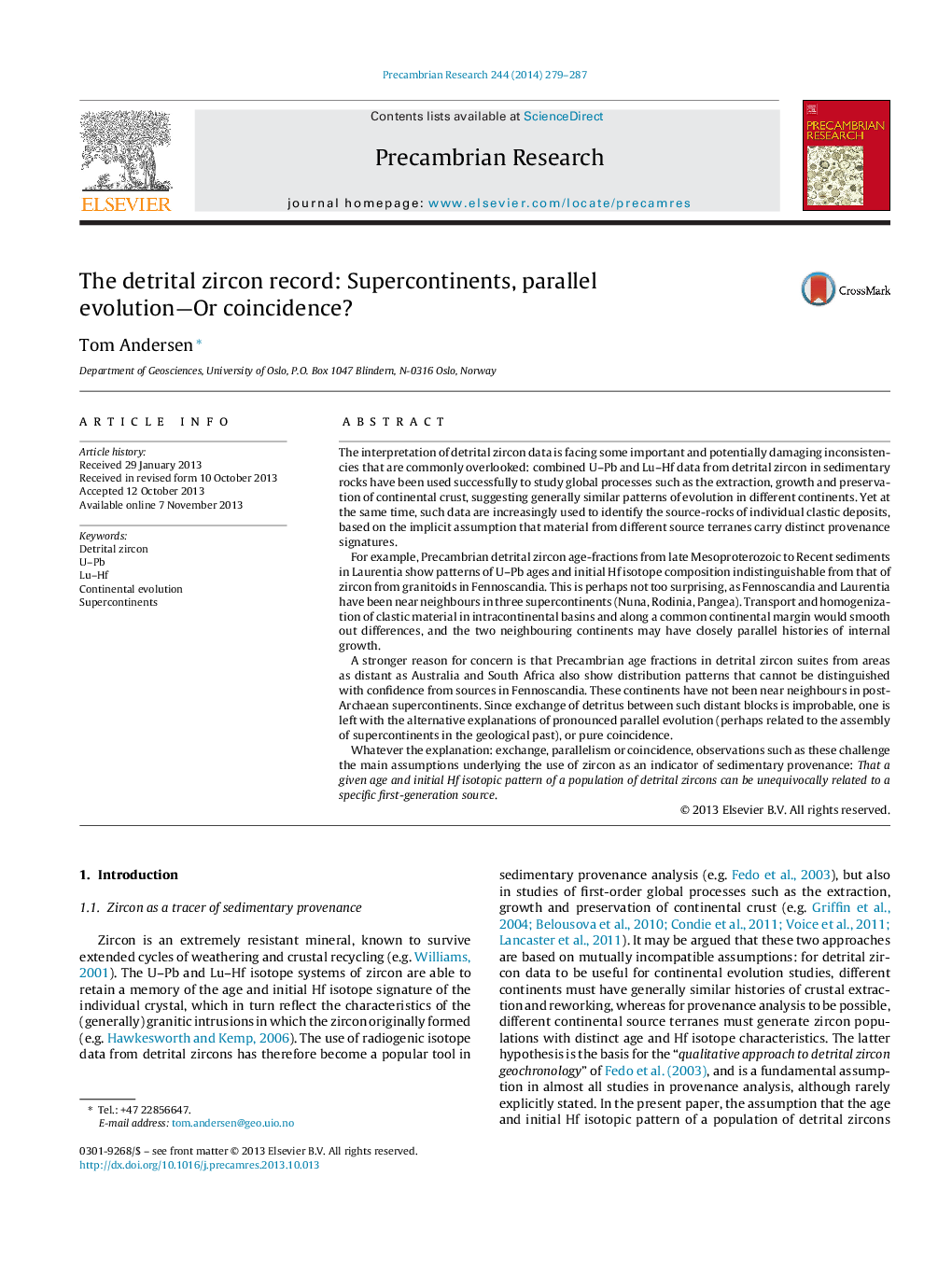| کد مقاله | کد نشریه | سال انتشار | مقاله انگلیسی | نسخه تمام متن |
|---|---|---|---|---|
| 4723052 | 1639630 | 2014 | 9 صفحه PDF | دانلود رایگان |
• U–Pb and Lu–Hf data from detrital zircon suggest extensive reworking of older sediments.
• Detrital zircons cannot define a unique path “from source to sink”.
• “Continental fingerprints” are non-unique because of a shared prehistory and/or globally synchronous continental growth.
• Detrital zircon is a less useful indicator of sedimentary provenance than is generally assumed.
The interpretation of detrital zircon data is facing some important and potentially damaging inconsistencies that are commonly overlooked: combined U–Pb and Lu–Hf data from detrital zircon in sedimentary rocks have been used successfully to study global processes such as the extraction, growth and preservation of continental crust, suggesting generally similar patterns of evolution in different continents. Yet at the same time, such data are increasingly used to identify the source-rocks of individual clastic deposits, based on the implicit assumption that material from different source terranes carry distinct provenance signatures.For example, Precambrian detrital zircon age-fractions from late Mesoproterozoic to Recent sediments in Laurentia show patterns of U–Pb ages and initial Hf isotope composition indistinguishable from that of zircon from granitoids in Fennoscandia. This is perhaps not too surprising, as Fennoscandia and Laurentia have been near neighbours in three supercontinents (Nuna, Rodinia, Pangea). Transport and homogenization of clastic material in intracontinental basins and along a common continental margin would smooth out differences, and the two neighbouring continents may have closely parallel histories of internal growth.A stronger reason for concern is that Precambrian age fractions in detrital zircon suites from areas as distant as Australia and South Africa also show distribution patterns that cannot be distinguished with confidence from sources in Fennoscandia. These continents have not been near neighbours in post-Archaean supercontinents. Since exchange of detritus between such distant blocks is improbable, one is left with the alternative explanations of pronounced parallel evolution (perhaps related to the assembly of supercontinents in the geological past), or pure coincidence.Whatever the explanation: exchange, parallelism or coincidence, observations such as these challenge the main assumptions underlying the use of zircon as an indicator of sedimentary provenance: That a given age and initial Hf isotopic pattern of a population of detrital zircons can be unequivocally related to a specific first-generation source.
Journal: Precambrian Research - Volume 244, May 2014, Pages 279–287
